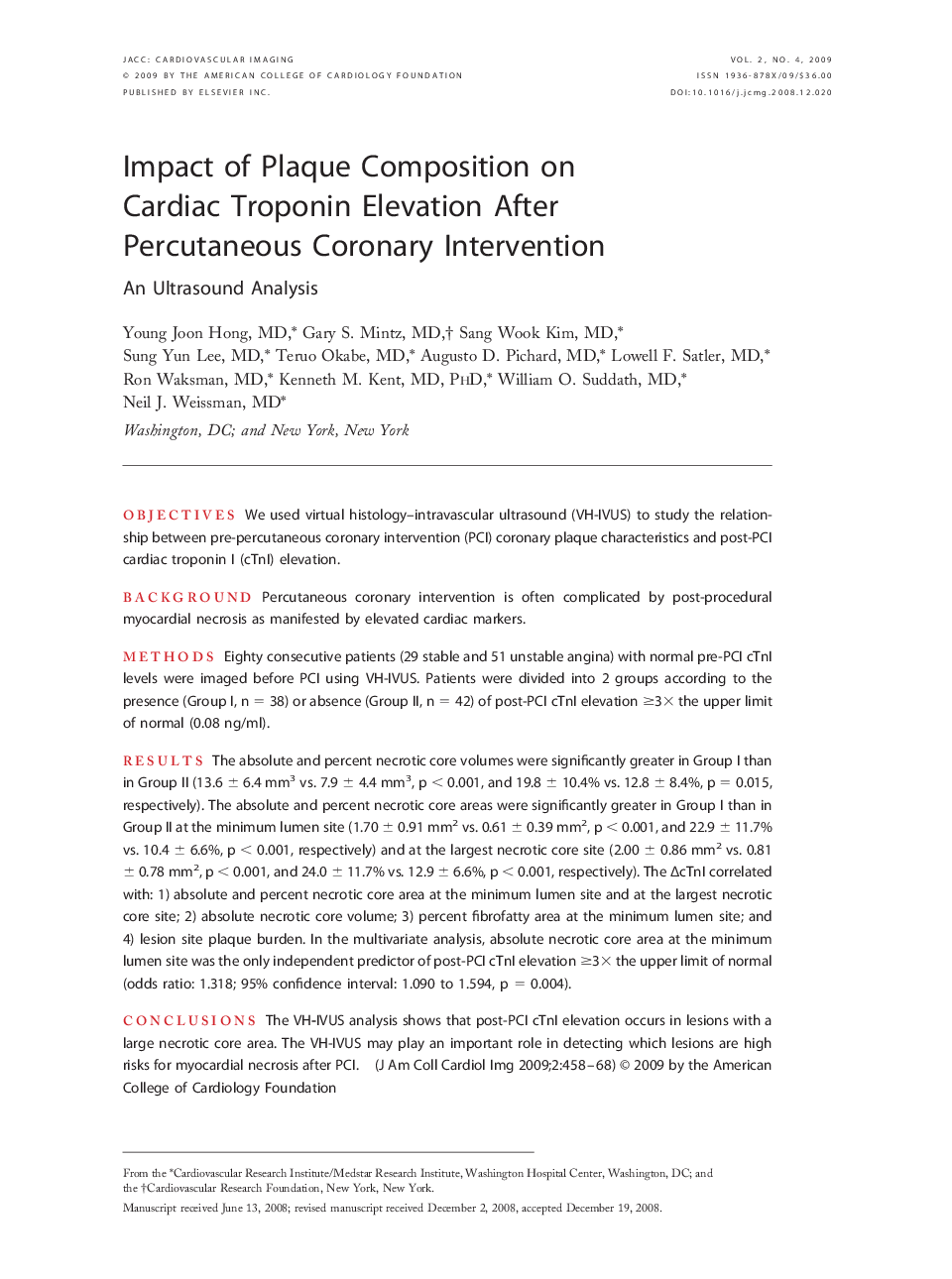| Article ID | Journal | Published Year | Pages | File Type |
|---|---|---|---|---|
| 2938840 | JACC: Cardiovascular Imaging | 2009 | 11 Pages |
ObjectivesWe used virtual histology–intravascular ultrasound (VH-IVUS) to study the relationship between pre-percutaneous coronary intervention (PCI) coronary plaque characteristics and post-PCI cardiac troponin I (cTnI) elevation.BackgroundPercutaneous coronary intervention is often complicated by post-procedural myocardial necrosis as manifested by elevated cardiac markers.MethodsEighty consecutive patients (29 stable and 51 unstable angina) with normal pre-PCI cTnI levels were imaged before PCI using VH-IVUS. Patients were divided into 2 groups according to the presence (Group I, n = 38) or absence (Group II, n = 42) of post-PCI cTnI elevation ≥3× the upper limit of normal (0.08 ng/ml).ResultsThe absolute and percent necrotic core volumes were significantly greater in Group I than in Group II (13.6 ± 6.4 mm3 vs. 7.9 ± 4.4 mm3, p < 0.001, and 19.8 ± 10.4% vs. 12.8 ± 8.4%, p = 0.015, respectively). The absolute and percent necrotic core areas were significantly greater in Group I than in Group II at the minimum lumen site (1.70 ± 0.91 mm2 vs. 0.61 ± 0.39 mm2, p < 0.001, and 22.9 ± 11.7% vs. 10.4 ± 6.6%, p < 0.001, respectively) and at the largest necrotic core site (2.00 ± 0.86 mm2 vs. 0.81 ± 0.78 mm2, p < 0.001, and 24.0 ± 11.7% vs. 12.9 ± 6.6%, p < 0.001, respectively). The ΔcTnI correlated with: 1) absolute and percent necrotic core area at the minimum lumen site and at the largest necrotic core site; 2) absolute necrotic core volume; 3) percent fibrofatty area at the minimum lumen site; and 4) lesion site plaque burden. In the multivariate analysis, absolute necrotic core area at the minimum lumen site was the only independent predictor of post-PCI cTnI elevation ≥3× the upper limit of normal (odds ratio: 1.318; 95% confidence interval: 1.090 to 1.594, p = 0.004).ConclusionsThe VH-IVUS analysis shows that post-PCI cTnI elevation occurs in lesions with a large necrotic core area. The VH-IVUS may play an important role in detecting which lesions are high risks for myocardial necrosis after PCI.
